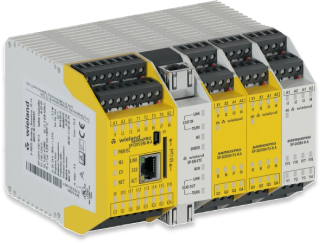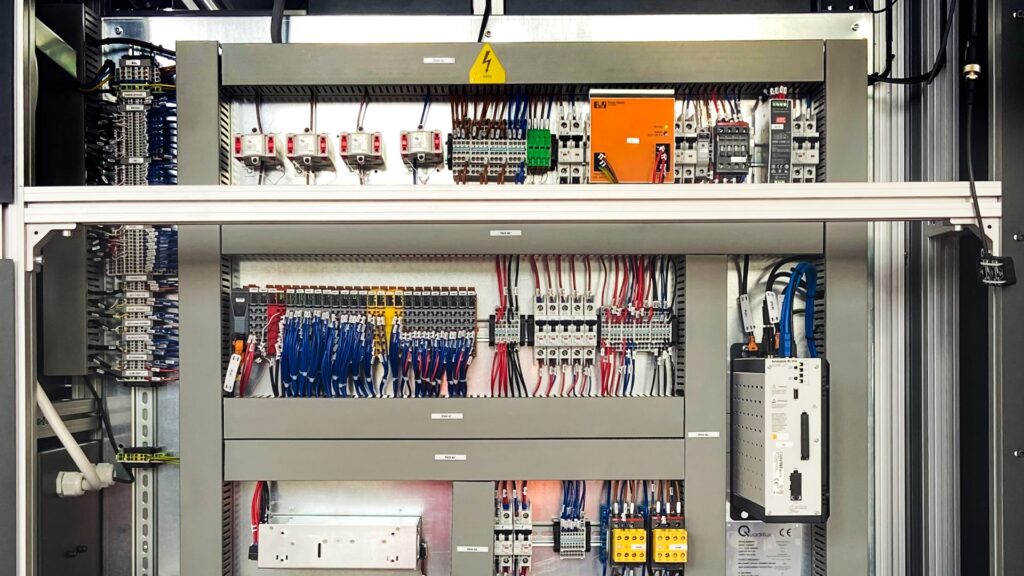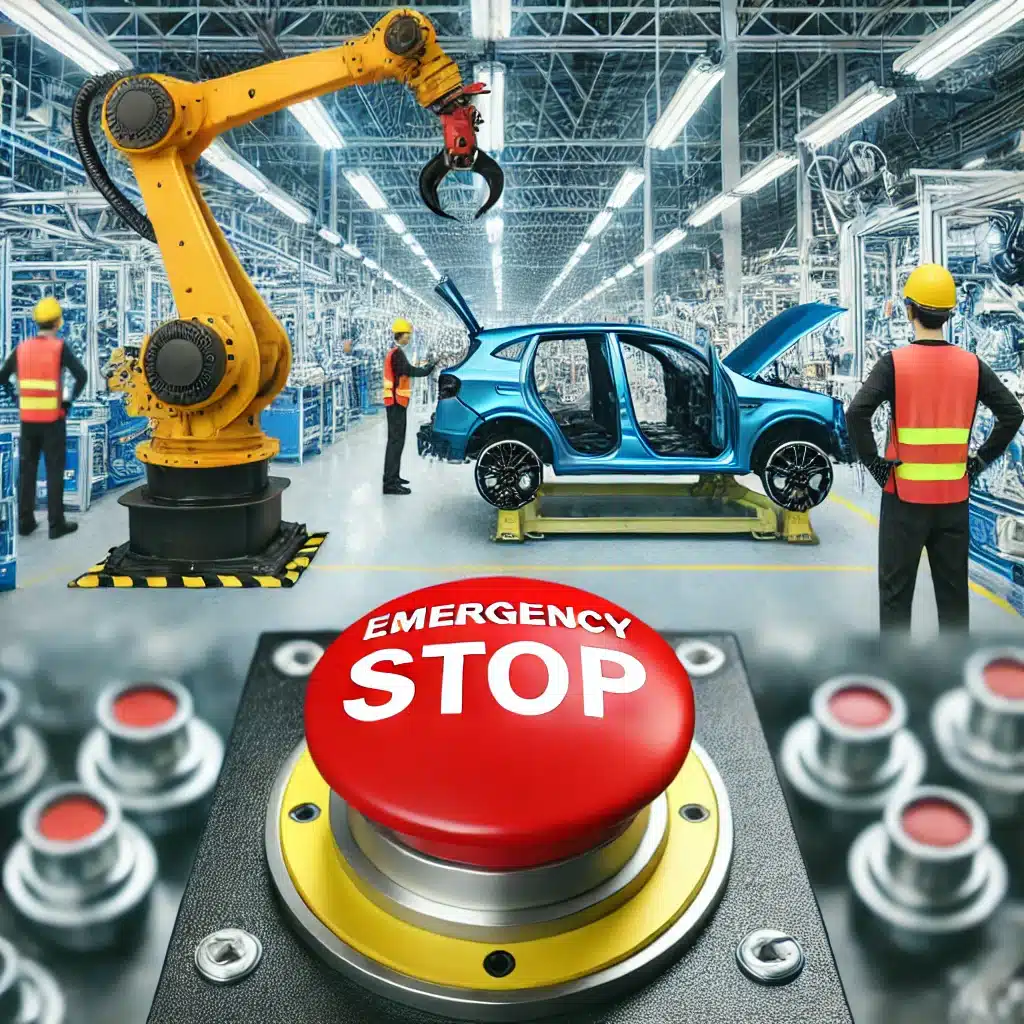
28
How to Choose the Right Safety PLC
How to Choose the Right Safety PLC
Standard PLCs and Safety PLCs may look similar on the surface, but they serve very different purposes in industrial automation. Understanding the distinction is critical when designing systems where safety and reliability are essential.
Standard PLCs are built to automate machinery, manage I/O devices, and execute logic tasks for operational efficiency. They focus on performance, speed, and control—but they don’t inherently include safety functionalities. Any fault in the logic or hardware of a standard PLC could potentially result in unsafe machine behavior unless supplemented with separate safety components.
Safety PLCs, on the other hand, are purpose-built to monitor and control safety functions within a machine or system. These controllers are certified to meet functional safety standards such as IEC 61508 and ISO 13849. Unlike standard PLCs, they’re designed to detect faults, enter a safe state when necessary, and even continue partial operation without compromising human safety.
The key differences lie in both hardware architecture and software design. Safety PLCs feature redundant processors, fail-safe communication protocols, and diagnostic checks that continuously verify system integrity. They’re also programmed using function blocks specifically developed for safety tasks—such as emergency stop, two-hand control, or guard locking.
For industries working with hazardous machinery—like robotics, packaging, or material handling—relying solely on a standard PLC can leave gaps in risk mitigation. Integrating a safety PLC ensures compliance, reduces liability, and most importantly, protects workers. If you’re still exploring whether a Safety PLC or a Safety Relay suits your needs better, check out our comparison guide. For a broader understanding of how these devices fit into machine guarding strategies, visit On the Fence About Machine Guarding?.
Understanding communication is just as critical—our Guide to PLC Protocols explains how these systems integrate into broader automation networks. If you’re new to safety systems in general, our Master’s Guide to Safety Switches & Sensors is a great starting point for understanding the components that work alongside Safety PLCs in industrial environments.
Identify Your Specific Application Requirements
Choosing the right PLC system—whether it’s a standard or safety PLC—starts with a clear understanding of your application’s unique demands. Every industrial environment has different requirements depending on machine complexity, risk level, and environmental conditions.
Processing Power and Speed
For high-performance automation systems, processing speed is often a deciding factor. Applications involving real-time motion control, robotic arms, or high-speed packaging lines require PLCs with fast scan times and powerful CPUs. A safety PLC with strong processing capabilities ensures rapid detection and response to hazardous conditions, minimizing risk without compromising production throughput. Whether it’s a multi-axis servo system or synchronized conveyor network, choosing a PLC with the right processing power keeps operations smooth and safe.
Input/Output (I/O) Capabilities
The number and type of I/O points you need will directly impact your PLC selection. Complex automation tasks—such as integrating multiple sensors, safety light curtains, or emergency stop devices—demand scalable I/O configurations. Safety PLCs offer dedicated fail-safe inputs and outputs designed for critical safety devices, ensuring compliant and reliable machine control. For instance, a packaging line with light curtains and interlocks will benefit from a safety PLC that simplifies wiring and enhances diagnostics.
Environmental Considerations
Industrial environments can be harsh—exposure to dust, moisture, extreme temperatures, or vibration is common. In such conditions, PLCs with robust enclosures, extended temperature ranges, and IP-rated protection become essential. Safety PLCs used in environments like food processing plants or outdoor machinery must be certified to perform reliably under these challenging conditions. Choosing a PLC that matches your environmental needs helps ensure long-term performance and reduces the risk of failure due to external factors.
Assess Regulatory Compliance
When selecting a safety PLC, regulatory compliance isn’t optional—it’s fundamental. Ensuring your automation system meets applicable safety standards not only protects personnel but also shields your business from legal and financial consequences. Understanding the key regulations that govern machine safety helps you choose a PLC that aligns with your industry and application needs.
Key Safety Standards: IEC 61508, IEC 62061, and ISO 13849
Three major safety standards form the foundation of functional safety in industrial automation:
- IEC 61508 is the umbrella standard for functional safety across all industries. It defines safety integrity levels (SIL) and guides the design of electrical, electronic, and programmable safety-related systems. Safety PLCs certified to this standard are built with redundancy, diagnostics, and fault tolerance in mind.
- IEC 62061 is a sector-specific standard derived from IEC 61508, tailored for machinery safety. It focuses on the application of safety-related electrical control systems in machines and is often referenced in risk assessments. A safety PLC used in complex machinery—like automated assembly lines—should align with IEC 62061 for compliance.
- ISO 13849 applies specifically to the safety of machinery, emphasizing performance levels (PL) based on the probability of dangerous failures. It’s commonly used in Europe and aligns closely with real-world machine applications. Many safety PLCs support both ISO 13849 and IEC 62061, allowing integrators to design flexible yet compliant safety systems.
Whether you’re designing a new machine or upgrading existing equipment, working with a safety PLC that meets these standards ensures your control system can be validated, audited, and trusted in demanding industrial settings.
Source of Data for PLCs – A Brief Discussion of Safety Inputs
The effectiveness of any safety system, even with a high-quality safety PLC, begins with its ability to detect hazards and trigger appropriate protective responses. As such, safety input products form the foundation of a reliable safety architecture. Selecting the correct components to match specific hazards is essential for maintaining workplace safety.
Venus Automation offers a wide range of safety input devices to suit varied industrial applications. Detection solutions include the safety light curtain range, available for body protection, hand protection, and finger protection. Options supporting long range sensing and outdoor environments are available, along with muting light curtain models designed for automated processes. Supporting components such as photo cells, connection boxes, and muting accessories are also supplied. Additional detection options include multi beam systems and advanced laser scanner technologies.
To detect presence or motion at close range, proximity sensors are available, including non-contact switches, with magnetic or RFID coding technologies. Enclosures come in plastic, metal, or stainless steel variants for application-specific durability.
Mechanical safety detection is supported by products such as safety edge and mounting systems, contact mats, and bumpers with relevant edge accessories., including cabling to transmit signals from these devices. These are ideal for perimeter and surface-triggered protection zones. For advanced zone control, trapped key systems and blocking devices ensure process integrity.
Manual control inputs are also critical in many safety scenarios. Venus Automation provides safety enabling switches, limit switch options, foot pedal switches, control pads, and standard control components.
Together, these input systems interface with the machine’s transmission system, ensuring rapid response to unsafe conditions. Combined with suitable outputs and logic control, they serve as the first line of defence in safeguarding personnel and equipment.
Importance of Training and Education
Even the most advanced safety PLC is only as effective as the people who configure, operate, and maintain it. Investing in proper training and education is essential for ensuring that your automation system performs safely and reliably.
Engineers, technicians, and operators need to understand not just how to program a safety PLC, but also how to apply it within the context of functional safety standards like ISO 13849 or IEC 62061. Without this knowledge, it’s easy to misapply safety functions, overlook critical diagnostics, or introduce unintended risks during system changes.
Ongoing education also helps teams stay current with evolving technologies—such as new safety function blocks, networking protocols, or cybersecurity features. By prioritizing continuous learning, businesses create a culture of safety, reduce the likelihood of errors, and maintain compliance in high-risk environments.
Future-Proofing Your Investment
Choosing a safety PLC isn’t just about meeting today’s requirements—it’s about ensuring your system can evolve with your business. Future-proofing your investment means selecting platforms that are scalable, supported by active development, and capable of adapting to new technologies and safety standards. Brands like Pizzato Geminis, ReeR MOSAIC, and Wieland samosPRO are leading the way with forward-thinking solutions built for long-term performance.
Pizzato Geminis
The Pizzato Geminis safety PLC series stands out for its modularity and integration flexibility. Designed for machine safety applications, Geminis allows for expansion through add-on modules, making it ideal for systems that may grow over time. Its support for both local and distributed I/O, combined with intuitive software, simplifies updates and reconfigurations. For applications requiring advanced safety logic—like packaging lines with dynamic zone control—Geminis provides the adaptability needed to stay compliant as safety regulations evolve.
ReeR MOSAIC
ReeR MOSAIC is a versatile safety controller designed to centralize multiple safety functions within one platform. Its modular structure allows users to expand the system by simply adding new units, making it suitable for everything from small standalone machines to complex interconnected systems. ReeR MOSAIC supports a wide range of safety devices, including light curtains, emergency stops, and interlock switches, and its user-friendly programming environment helps reduce engineering time. This flexibility makes it a solid long-term choice for OEMs and system integrators seeking scalable machine safety solutions.
Wieland samosPRO
Wieland samosPRO offers a compact yet powerful solution for safety-critical applications. It’s designed with Industry 4.0 in mind, supporting industrial Ethernet protocols and remote diagnostics—ideal for connected factories. The samosPLAN programming software includes pre-certified function blocks that accelerate development and reduce risk. As your automation systems grow or become more complex, samosPRO can scale with minimal effort thanks to its modular design and robust communication capabilities. It’s especially well-suited for industries looking to integrate safety PLCs into smart manufacturing environments.
By choosing platforms like Geminis, MOSAIC, and samosPRO, you’re not only ensuring compliance today but also positioning your automation systems for growth, flexibility, and long-term value.


